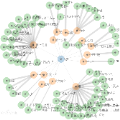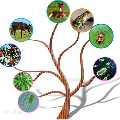Human knowledge provides a formal understanding of the world. Knowledge graphs that represent structural relations between entities have become an increasingly popular research direction towards cognition and human-level intelligence. In this survey, we provide a comprehensive review on knowledge graph covering overall research topics about 1) knowledge graph representation learning, 2) knowledge acquisition and completion, 3) temporal knowledge graph, and 4) knowledge-aware applications, and summarize recent breakthroughs and perspective directions to facilitate future research. We propose a full-view categorization and new taxonomies on these topics. Knowledge graph embedding is organized from four aspects of representation space, scoring function, encoding models and auxiliary information. For knowledge acquisition, especially knowledge graph completion, embedding methods, path inference and logical rule reasoning are reviewed. We further explore several emerging topics including meta relational learning, commonsense reasoning, and temporal knowledge graphs. To facilitate future research on knowledge graphs, we also provide a curated collection of datasets and open-source libraries on different tasks. In the end, we have a thorough outlook on several promising research directions.
翻译:人类知识提供了对世界的正式理解。代表各实体之间结构关系的知识图表已成为越来越受欢迎的认知和人际情报研究方向。在这次调查中,我们对知识图表进行全面审查,涉及以下总体研究课题:(1) 知识图表教学,(2) 知识图表学习,(2) 知识获取和完成,(3) 时间知识图表,(4) 知识认知应用,以及(4) 总结最近的突破和观点方向,以促进未来的研究。我们提议对这些题目进行全面分类和新的分类。知识图表嵌入了四个方面,即代表空间、评分功能、编码模型和辅助信息。关于知识获取,特别是知识图表的完成、嵌入方法、路径推理和逻辑规则推理,我们进一步探讨几个新出现的课题,包括元关系学习、常识推理和时间知识图。为了便利今后对知识图表的研究,我们还就不同任务对数据集和开源图书馆进行了整理。最后,我们对若干有希望的研究方向有透彻的看法。



